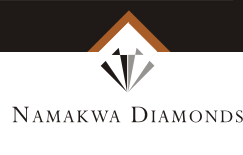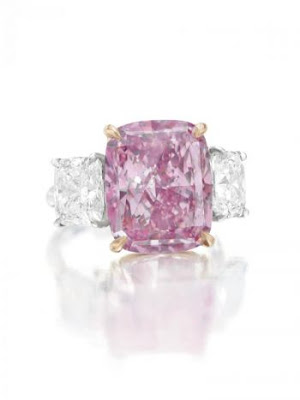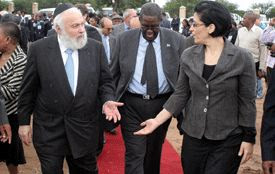
After a successful two months since its Bangalore launch, De Beers, the world’s premier diamond mining company, introduced its iconic jewellery brand, Forevermark, in Mumbai this Monday. With a vision to make this the leading global brand by the end of this decade, it is important to see how consumers respond to it in India, say Binita Cooper, MD, and Stephen Lussier, CEO, Forevermark Diamonds, in an interview with Dilip Kumar Jha. Edited excerpts:
How is Forevermark different from India’s existing renowned brands?
Forevermark will offer Indian diamond purchasers quality, integrity and inspiration. These are the world’s most carefully selected ones, bearing a unique inscription each at its heart, which is a promise that the diamond has been carefully selected to meet standards of quality and integrity. Invisible to the naked eye, the inscription can be seen using a special Forevermark viewer (only found in authorised Forevermark jewellers). It is also recorded on the personalised Forevermark identification card accompanying every diamond under this category. Less than one per cent of the world’s diamonds are eligible to become a Forevermark diamond. Each one has been responsibly sourced and nurtured at every step of its journey from mine to fingers. Only a select group of Master Diamantaires are eligible to cut and polish Forevermark diamonds. Only a few, exclusive, jewellers, each passionate about creating the finest designs inspired by these exceptional diamonds, are able to sell at retail.
Why a launch in India before the US, despite the latter being the world’s largest jewellery consumer?
Constituting nearly 40 per cent of global jewellery consumption, the US is recovering faster than we expected from the global economic slowdown which started in 2008. We have formulated a team for studying the stupendous growth in jewellery sales recorded in the US last year and so far this year. But the overall growth in the economy and consumers’ aspiration towards diamond jewellery is unique here. Hence, we thought of a launch in India.
Our experience with the initial launch in Bangalore two months ago is excellent. Hence, we are also looking at expansion in other markets. Although identifying of partners is an ongoing process, we initially launched Forevermark with four partners in Bangalore and 10 in Mumbai. Later this week, we are launching the brand in New Delhi, with 10 partners. In the second half, we will be launching it in Chennai, Hyderabad and Kolkata.
How do you see the change from consumers’ traditional jewellers?
Branded diamond and gold jewellery is growing here, along with gold jewellery from traditional jewellers. Traditional jewellery sales are not going to die here, due to consumers’ inherent faith in local jewellers. But consumers’ affinity towards diamond jewellery has been unique, which is set to boost diamond jewellery sales in India.
What makes Forevermark so unique?
We rigorously pick these. De Beers selects the diamond suitable for categorising under Forevermark and sends such pieces to select diamantaires for cutting and polishing. After the cut and polish, diamantaires send pieces back to our unique and most modern lab in Antwerp, which rejects around 10 per cent. The remaining 90 per cent are sent back to diamantaires for inserting into jewellery. The selection process is unique.
How much premium does it fetch over existing leading brands in India?
Nil to 10 per cent. But there is no comparison between the existing leading brands and Forevermark, and the selection criteria are different. A Forevermark diamond is selected only on two criteria, quality and integrity, that are never compromised.
What is the entry size and price?
Instead of we fixing the price for jewellery manufactured by different diamantaires, the pricing is decided by the manufacturer. What we ensure is the quality and integrity for the world’s most carefully selected diamond. Although price differs from jeweller to jeweller, yet consumers need to pay a minimum Rs 30,000 for the smallest, 14-points (100 points=1 carat) Forevermark jewellery, with the sky the upward limit. We also want our partners to grow with us. The jewellery looks initially for high-end consumers, but others can also afford it to look beautiful and distinguish themselves from the rest of the crowd.
What factors are you looking at for your success in India?
Looking at the experience in the first two years of launch in thew Far East, China, Hong Kong and Japan, digital marketing seems the most effective publicity tool for making the production popular. However, we would not hesitate on publicity through other means, for which we have a huge marketing spending plan in the pipeline.
Your expectations from the Indian market?
We are very optimistic. We expect to generate 15-20 per cent revenue from here in the next five years.
business-standard























